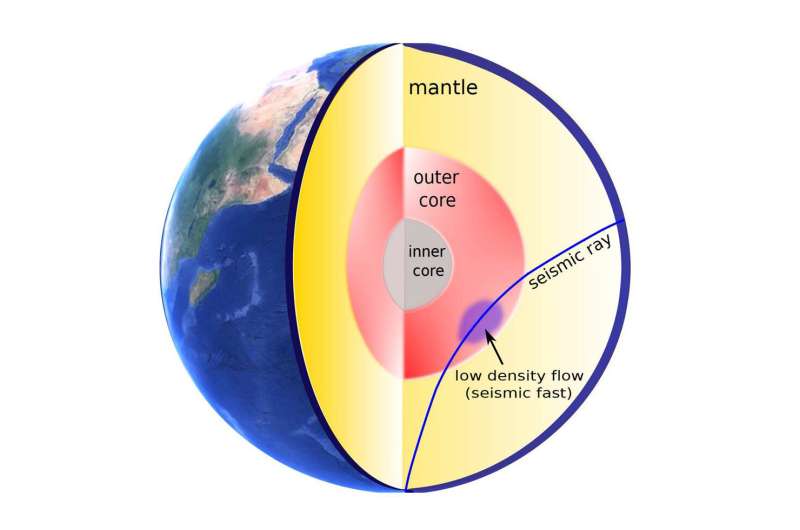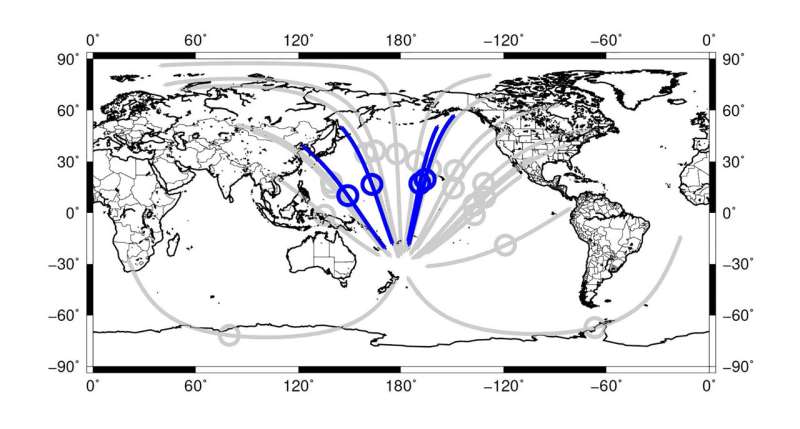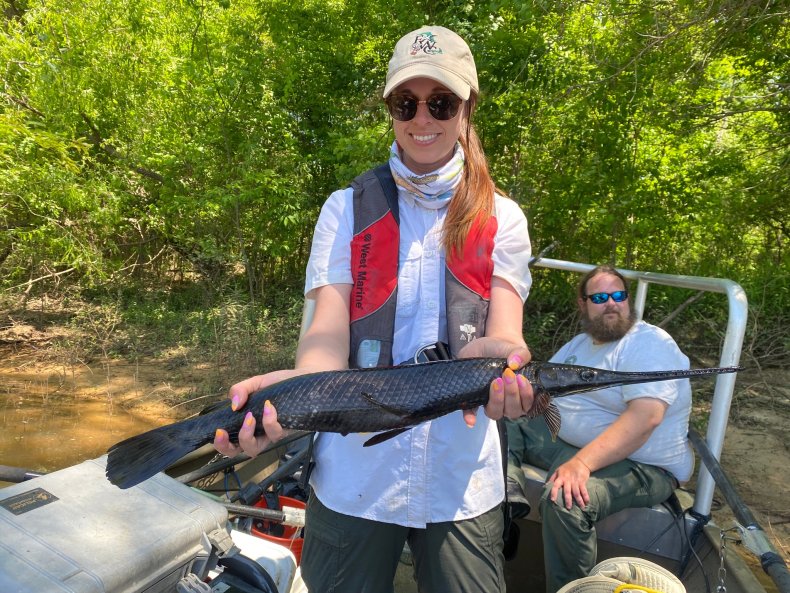Seismic waves from earthquakes reveal changes in the Earth's outer core

In May 1997, a large earthquake shook the Kermadec Islands region in the South Pacific Ocean. A little over 20 years later, in September 2018, a second big earthquake hit the same location, its waves of seismic energy emanating from the same region.
Though the earthquakes occurred two decades apart, because they occurred in the same region, they'd be expected to send seismic waves through the Earth's layers at the same speed, said Ying Zhou, a geoscientist with the Department of Geosciences in the Virginia Tech College of Science.
But in data recorded at four of more than 150 Global Seismographic Network stations that log seismic vibrations in real time, Zhou found an anomaly among the twin events: During the 2018 earthquake, a set of seismic waves known as SKS waves traveled about one second faster than their counterparts had in 1997.
According to Zhou, whose findings were recently published in Communications Earth & Environment, that one-second discrepancy in SKS wave travel time gives us an important and unprecedented glimpse of what's happening deeper in the Earth's interior, in its outer core.
What's inside counts
The outer core is sandwiched between the mantle, the thick layer of rock underneath the Earth's crust, and the inner core, the planet's deepest interior layer. It's composed mainly of liquid iron that undergoes convection, or fluid flow, as the Earth cools. This resulting swirling of liquid metal produces electrical currents responsible for generating the Earth's magnetic field, which protects the planet and all life on it from harmful radiation and solar winds.
Without its magnetic field, the Earth could not sustain life, and without the moving flows of liquid metal in the outer core, the magnetic field wouldn't work. But scientific understanding of this dynamic is based on simulations, said Zhou, an associate professor. "We only know that in theory, if you have convection in the outer core, you'll be able to generate the magnetic field," she said.
Scientists also have only been able to speculate about the source of gradual changes in strength and direction of the magnetic field that have been observed, which likely involves changing flows in the outer core.
"If you look at the north geomagnetic pole, it's currently moving at a speed of about 50 kilometers [31 miles] per year," Zhou said. "It's moving away from Canada and toward Siberia. The magnetic field is not the same every day. It's changing. Since it's changing, we also speculate that convection in the outer core is changing with time, but there's no direct evidence. We've never seen it."

Zhou set out to find that evidence. The changes happening in the outer core aren't dramatic, she said, but they're worth confirming and fundamentally understanding. In seismic waves and their changes in speed on a decade time scale, Zhou saw a means for "direct sampling" of the outer core. That's because the SKS waves she studied pass right through it.
"SKS" represents three phases of the wave: First it goes through the mantle as an S wave, or shear wave; then into the outer core as a compressional wave; then back out through the mantle as an S wave. How fast these waves travel depend in part on the density of the outer core that's in their path. If the density is lower in a region of the outer core as the wave penetrates it, the wave will travel faster, just as the anomalous SKS waves did in 2018.
"Something has changed along the path of that wave, so it can go faster now," Zhou said.
To Zhou, the difference in wave speed points to low-density regions forming in the outer core in the 20 years since the 1997 earthquake. That higher SKS wave speed during the 2018 earthquake can be attributed to the release of light elements such as hydrogen, carbon, and oxygen in the outer core during convection that takes place as the Earth cools, she said.
"The material that was there 20 years ago is no longer there," Zhou said. "This is new material, and it's lighter. These light elements will move upward and change the density in the region where they're located."
To Zhou, it's evidence that movement really is happening in the core, and it's changing over time, as scientists have theorized. "We're able to see it now," she said. "If we're able to see it from seismic waves, in the future, we could set up seismic stations and monitor that flow."
What's next
That's Zhou's next effort. Using a method of wave measurement known as interferometry, her team plans to analyze continuous seismic recordings from two seismic stations, one of which will serve as a "virtual" earthquake source, she said.
"We can use earthquakes, but the limitation of relying on earthquake data is that we can't really control the locations of the earthquakes," Zhou said. "But we can control the locations of seismic stations. We can put the stations anywhere we want them to be, with the wave path from one station to the other station going through the outer core. If we monitor that over time, then we can see how core-penetrating seismic waves between those two stations change. With that, we will be better able to see the movement of fluid in the outer core with time.Swarm satellites unveil magnetic waves that sweep the outermost part of Earth's outer core
More information: Ying Zhou, Transient variation in seismic wave speed points to fast fluid movement in the Earth's outer core, Communications Earth & Environment (2022). DOI: 10.1038/s43247-022-00432-7
Journal information: Nature Communications Earth & Environment
Provided by Virginia Tech













